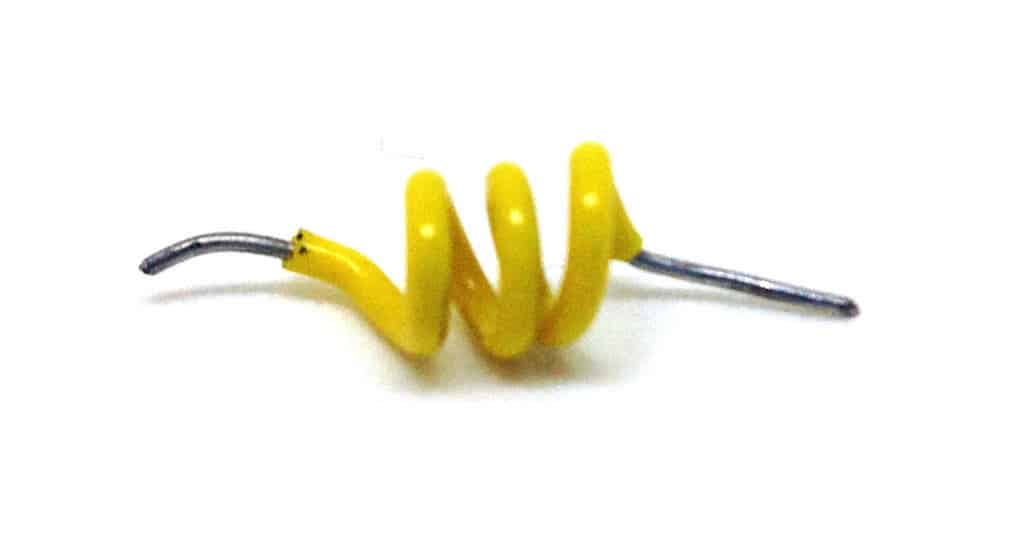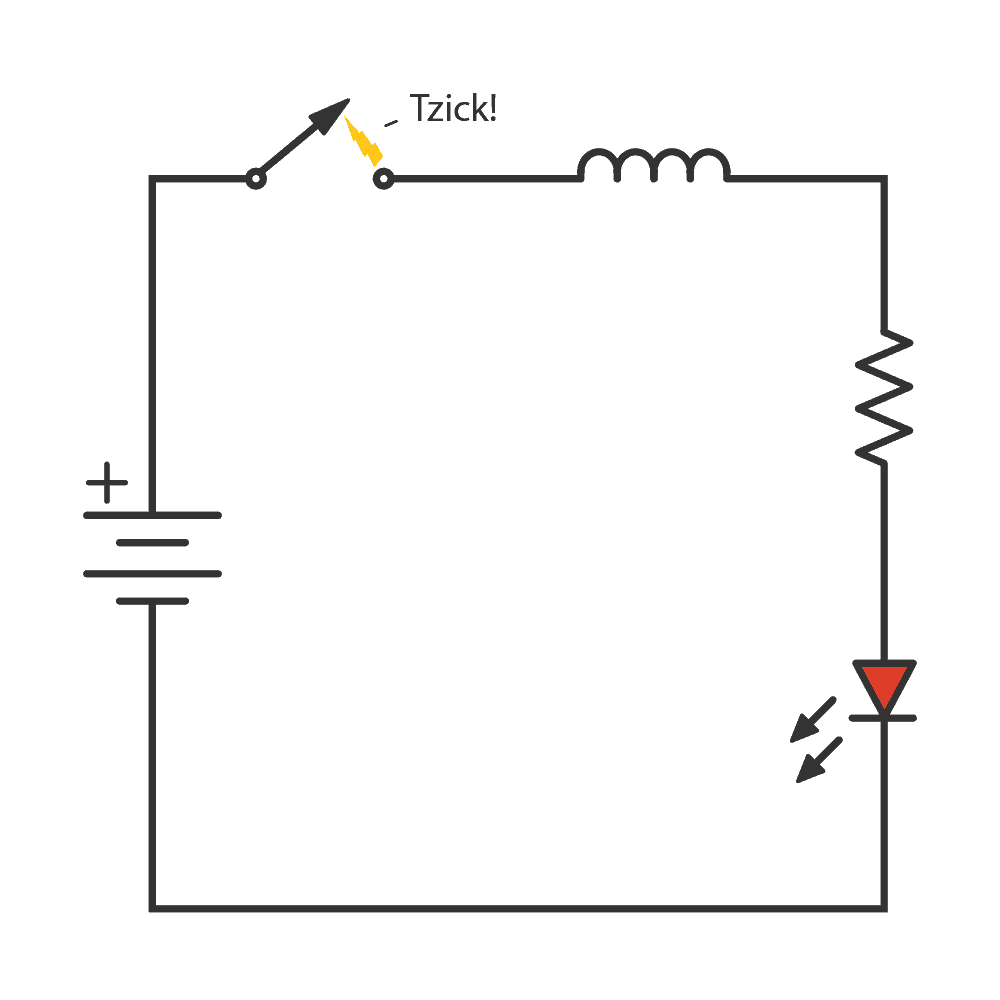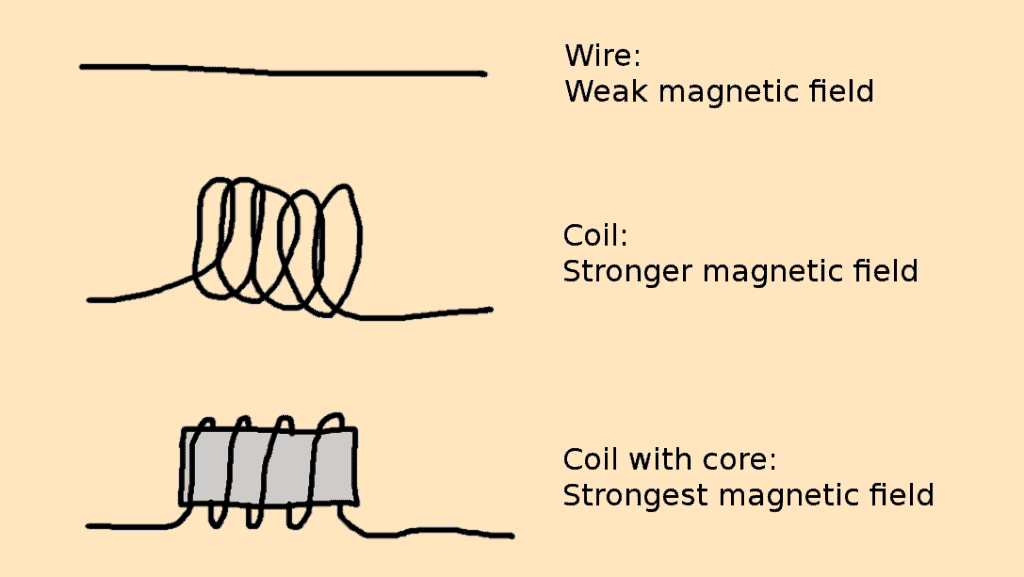I have received some emails with the question “What is an inductor?”. And I realized that it is a really good question. Because it’s kind of a strange component.
An inductor is just a coil of wire.
It’s incredibly easy to make one — just make some loops with a wire. But because wires create magnetic fields, you’ll soon see that it can do some interesting stuff.

The Inductor in a Circuit
If you’re learning electronics, the first important question is: What does the inductor do in a circuit?
An inductor will resist changes in current.
In the circuit below, you have an LED and a resistor in series with an inductor. And there’s a switch to turn the power on and off.

Without the inductor, this would just be a normal LED circuit and the LED would turn on right away when you flip the switch.
But the inductor is a component that resists changes in current.
When the switch is off, there is no current flowing. When you flip the switch on, current starts flowing. That means there is a change in current which the inductor will resist.
So instead of the current going from zero to maximum right away, it will gradually increase up to its maximum current.
(The maximum current for this circuit is set by the resistor and the LED.)
Since the current decides the light-intensity of the LED, the inductor makes the LED fade in instead of turning on instantly.
What Happens When You Disconnect the Inductor?
The inductor also resists the current from switching off instantly. The current won’t just stop flowing in the inductor in an instant.
So when you switch off the power, the inductor will try to continue the current flow.
It does this by quickly increasing the voltage across its terminals.
It actually increases so much that you can get a little spark across the pins of your switch!

This spark makes it possible for the current to keep flowing (through the air!) for a fraction of a second until the magnetic field around the inductor has broken down.
That’s why it’s common to place a diode in reverse across the coil of a relay or a DC motor. This way, the inductor can discharge through the diode instead of creating high voltages and sparks in the circuit.
How Inductors Works
Any wire with current flowing through it has a small magnetic field surrounding it.
When you wind the wire into a coil, the field becomes stronger.
If you wind the wire around a magnetic core, such as steel or iron, you’ll get an even stronger magnetic field.
This is how you create an electromagnet.

The magnetic field around the inductor depends on the current. So when the current changes, the magnetic field changes.
When the magnetic field changes, a voltage is created across the inductor’s terminals that oppose this change.
What Can You Use Inductors For?
It’s not that common to see discrete inductors in the typical example circuits for beginners. So if you’re just starting out, you probably won’t come across them just yet.
But they are very common in power supplies. For example, to create a buck or boost converter. And they are common in radio circuits to create oscillators and filters.
What you will come across much more often though, is electromagnets. And they are basically inductors. You’ll find them in almost everything that moves from electricity. Like relays, motors, solenoids, speakers and more.
And a transformer is basically two inductors wound around the same core.
If you want to learn how to other electronics components work, continue to the basic components in electronics.
Copyright Build Electronic Circuits
No comments:
Post a Comment